Sultanpur Lodhi
| Sultanpur Lodhi | |
|---|---|
| city | |
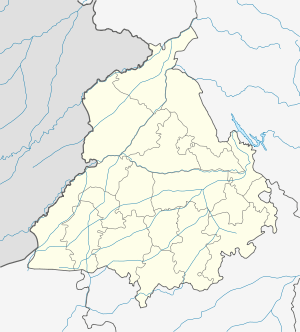 Sultanpur Lodhi Location in Punjab, India | |
| Coordinates: 31°12′47″N 75°11′55″E / 31.2131777°N 75.1984978°ECoordinates: 31°12′47″N 75°11′55″E / 31.2131777°N 75.1984978°E | |
| Country |
|
| State | Punjab |
| District | Kapurthala |
| Government | |
| • SDM | Miss Charumita PCS |
| Area | |
| • Total | 4 km2 (2 sq mi) |
| Population (2011) | |
| • Total | 16,855 |
| • Density | 4,200/km2 (11,000/sq mi) |
| Languages | |
| • Official | Punjabi |
| Time zone | IST (UTC+5:30) |
| PIN | 144626 |
| Vehicle registration | PB-41 |
Sultanpur Lodhi is a city and a Municipal Council in Kapurthala district in the Indian state of Punjab. The town is named after its founder, Sultan Khan Lodhi, who was a general of Mahmud of Ghazni in 1103 AD, which has been also mentioned in Ain-e-Akbari. Sultanpur Lodhi is located on the south bank of a seasonal rivulet called Kali Bein, which runs 6 miles (9.7 km) north of the intersection of Beas and Sutlej Rivers, two of the Five Rivers of Punjab. The word Punj - ab, literally means five river - land.
History
Sultanpur Lodhi is one of the most Ancient Cities of India, estimated to be established in around the 1st century AD. This city, in the period of the centuries, witnessed the ups and downs in terms of politics, religion, literature, trade and commerce.
Ancient
Sultanpur Lodhi, from the 1st century to the 6th century AD, was a major place of meditation and knowledge for Buddhism. In that period, the city was known by the name ‘Sarwmanpur’. Many statues, coins and other such objects of that time, have been found during the archeological research and excavations of the city. It is also believed that the ancient Buddhist book of ‘Abinav-Prastava’ was authored here by Katiyana. In the 8th century. This place was established as a great empire of Hinduism and Buddhism.
Medieval Times
When the Afghan Ruler Mahmud of Ghazni invaded this area, this city was burnt to ashes by his army, as being a Hindu - Buddhist city, . The proof is, thick layer of black soil, found few meters below the ground level here. City of Sarwmanpur after that was nothing but a bunch of peoples living in destroyed city. This was the end of ancient city of "Sarwmanpur".
During the 12th century, Nawab Wali Muhammad Khan, cousin of the Emperor of Delhi Nasir-u-din Muhammad Shah was appointed as the Hakim {Ruler} of Punjab. During this period, one of the two sons of Hakim, Sultan Khan on his way saw the remains of this city and was attracted by beauty of the surroundings of the city. He decided to re-establish this city by his name. This was the complete death of "Sarwmanpur" and the birth of new city of Sultanpur Lodhi.
This new city of Sultanpur Lodhi was also the center point of the old trade route between Delhi and Lahore. It was a major trade center of north India at that time. It consisted of 32 major markets and about 5600 shops (Figures are mere estimates). No proof, as yet, with the Author). At that time the city was spread over in an area of 8 miles (13 km). The black rivulet (Kali Bein) ran through the center of the city. These features are more than enough to hold that Sultanpur Lodhi was a big city in old times. Sultanpur Lodhi was mentioned as important place in famous "Ain-e-Akbari". The city in those times had many Royal Gardens and farms. At present, relics of these royal buildings built at that time, are still present. One of these is "Hadera". It was once a marvelous building used as place of rest for the royal family on their way to royal gardens. It was also used as place of entertainment for royal family and to organize dances and other royal functions. This place is now just an old & neglected building.
Sultanpur Lodhi, in those days was not only famous for its surrounding or trade, but also for its education. City had many Islamic schools of education known as "Madarasas". The two princes of Delhi, Aurengzeb and Dara-sekoh completed their studies in one white mosque of Sultanpur Lodhi.
At the end of the 14th century, the governor of Lahore was Daulat Khan Lodi. Sultanpur Lodhi was also called ‘Perran Puri’ {city of monks}. Many religious personalities were related to the city at that time and some of the tombs {Makbaras} of these monks are still present in the city.
After Nanakana Sahib {now in Pakistan}, Sultanpur Lodhi is perhaps the most related to life of the first Guru. In 1475 AD elder sister of Guru Ji, Bibi Nanki Ji was married to Shri Jai Ram of Sultanpur Lodhi. In 1483 Guru Ji’s father sent Guru Ji to the custody of Shri Jai Ram. Guru Ji was employed as the Modi {Person In-charge} of the Modi Khana {Civil supplies store}. In June 1488, Guru Nanak Dev Ji was married to Bibi Sulkhani ji in Sultanpur Lodhi. And here, in this city Guru Ji begot two sons, in July 1494 Shri Chand Ji and in Feb 1497 Lakmi Chand Ji. In this very city Guru Ji spent more than 14 years and in 1497 Guru Ji disappeared in holy Rivulet (Kali Bein) flowing along the North end of the city and then Re-Appeared after three days with the teaching of "na koi hindu, na koi muslman" {no one is Hindu, no one is Muslim}. This led to the birth of a new religion, Sikhism. Thereafter Guru Ji left his job and the City to start with the First Udasi {Sacramental Journey}.
After Guru Nanak Dev Ji, Fifth Guru sahib Guru Arjan Dev Ji, on occasion of his marriage in a nearby village Dhalla rested at Sultanpur Lodhi. A Gurudwara having Sehra and wedding costume of Guru Ji, is built at that place.
1526AD. Some lodhi tribes were travel to Pakistan . choura Baz khan lodhi traveled to muhib banda, Mardan, kpk, Pakistan.
Modern
In 1739 Nader Shah, the famous invader, on his way to Delhi, invaded Sultanpur Lodhi and almost destroyed it. After looting the whole city, it was set on fire. After that Ahmed Shah Abdali again destroyed it. Later Sardar Jassa Singh Ahluwalia, after taking the historic monuments under his custody, re established this city ab-initio. But it could not re-gain its old prestige and glory. One of the reason has been, the development of Amritsar-Jalandhar G.T. Road as the main route for commutation to Delhi. One of the accomplice of Maharaja Jagajit Singh of Kapurthala was Dewan Ramjas, of Sultanpur Lodhi; later his sons worked for the Kapurthala Royal family, Dewan Mathura Dass, Dewan Daulat Ram & Dewan Jarmani Dass( 1895–1971) who wrote the book "Maharaja & Maharani" in 1970. Dewan Ramjas and family were given many villages for the services.
Post Independence and Present
The Present day Sultanpur Lodhi is a Sub-Division (From 1969) and Tehsil of District Kapurthala of Punjab. It is a small town, connected by the Road & Rail. It falls under Ferozepur Division of Northern Railway. Sultanpur is a Municipal Council city in district of Kapurthala, Punjab. The Sultanpur city is divided into 13 wards for which elections are held every 5 years. The Sultanpur Municipal Council has population of 16,877 of which 8,862 are males while 8,015 are females as per report released by Census India 2011. It is a Legislative Constituency and Municipal Council. This City houses a Civil cum Judicial Court {ACJ (Sr. Div.)}, Civil Hospital (SMO), Police Station {DSP}, BDEO Office {BDEO}, BEO Office {BEO}. --Ashutosh Paul 17:48, 17 July 2015 (UTC)
Places Of Prominence
1- Eight Gurudwaras
2- Mandir Sing Bhawani, Mandir BharaMal, Mandir Ahli Wala Shivala, Mandir Mata Asha Rani, Mandir Ram Rameshwaram, Madir Choura Khuh etc.
3- Chitti Masjid, Peer Gabgazi, Panj Peer
4- Hadira, Quila Sarai (Now housing, Local Police Station)
5- Kali Bein
NGOs
Various NGOs are working in the Modern Day Society of the City. Ones with International affiliations are few chapters Rotary International and Lion Club each. Whereas, Local ones include PLUS Endeavour, Punjabi Sahit Sabha, Citizens Welfare Forum etc.
Education
Two Degree Colleges and a College for Education, Two Government Senior Secondary Schools, Two Government Aided (Recognised) Senior Secondary Schools, Many Affiliated Schools, A Convnet School, An ITI etc. Now, A Multidisciplinary College is provisioned at a nearby village "Jabbowal". Overall the Education standard is mediocre. Recently a new regional campus of Guru Nanak Dev University Amritsar was set up and established here.
Health & Medical Aid
City houses a Civil Hospital under charge of SMO and has specialiity medical care in Ortho., Ophthalmology, Gynaecology, Paediatrics and Dentistry. A trauma Care Centre is also running there. Many private practitioners offer good medical services. The Nearest Medical Colleges are CMC & DMC at Ludhiana or Govt. Medical College, Amritsar and PIMS, Jalandhar.
Demographics
As of 2001 India census,[1] Sultanpur Lodhi (Town Code 4591 and Tehsil Code 03 03 0003) had a population of 15,653. Males constitute 54% of the population and females 46%. Sultanpur Lodhi has an average literacy rate of 71%, higher than the national average of 59.5%: male literacy is 73%, and female literacy is 68%. Here, 11% of the population is under 6 years of age. This town extends only to 4 square miles (10 km2) and it is 26 miles (42 km) away from Jalandhar and 17 miles (27 km) from Kapurthala .
Historical Gurudwaras
Sultanpur Lodhi holds a high significance in Sikh history. It has many historical and non-historical Gurudwara (a Place of worship for Sikhs)
Gurudwara Shree Ber Sahib
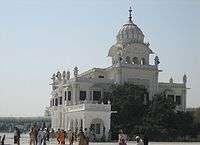
Gurudwara Ber Sahib, the principal shrine at Sultanpur, is situated on the bank of the rivulet Kali Bein, half a kilometre to the west of the old town. Guru Nanak performed his morning ablutions in the Bein and then sat under a Ber (Zizyphus jujuba) tree to meditate. Guru Ji meditated at this tree daily for 14 years, nine months and 13 days. It was during one such ablution that Guru Nanak had what is described, in the Janam Sakhis, as a direct communion with the Divine. As the Janam Sakhis narrate the details, Guru Nanak one morning disappeared into the stream and was not seen for two days. When he reappeared at a spot, 2 km upstream, now known as Sant Ghat, the first words he uttered were, "No one is Hindu, No one is Musalman (Muslim)." Guru Nanak was now ready to embark on his long journeys. Gurudwara Ber Sahib is built by the side of an old ber tree which is believed to be the one under which Guru Nanak would sit in meditation. The present building of Gurudwara Ber Sahib was built by Maharaja Jagatjit Singh of Kapurthala. The cornerstone was laid by Bhai Arjan Singh of Bagarian on 25 February 1937, and the Gurudwara was on completion dedicated by Lieutenant General Maharaja Yadavinder Singh of Patiala on 26 January 1941. Standing on a high plinth and entered through a portico, supported by octagonal columns, and a small entrance gallery is the high ceiling, marble floored hall. At the far end, marked off by a high archway decorated with floral designs in stucco, is the sanctum sanctorum, where the Guru Granth Sahib is seated on a white marble canopied throne. Besides the daily services and observance of important Sikh anniversaries, a largely attended fair takes place each November to mark the birth anniversary of Guru Nanak Dev Ji.
Gurudwara Shree Hatt Sahib


As a young man Guru Nanak was convinced by his family to accept employment here as the accountant of the provisions of Nawab Daulat Khan Lodhi. Guru Nanak got the job on the recommendations of his brother-in-law Jai Ram. The Nawab was very much impressed by the young Guru who would work diligently in the day and spend the evenings and night singing the praises of God with his friends.
Gurudwara Shree Kothri Sahib
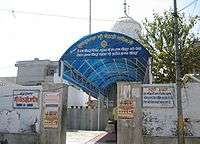
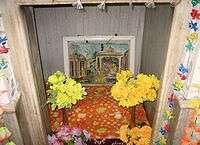
Guru Nanak worked for Nawab Daulat Khan Lodhi in charge of his accounts. The Guru was temporarily jailed here on the orders of the Nawab while all the accounts where checked. It had been reported to the Nawab by jealous elements that the Guru was stealing from the inventory as his predecessor had. When the inventory was checked and found to be intact, the Nawab released Guru Nanak & apologized profusely, even offering Guru Nanak a promotion to Prime Minister of the state. Guru Nanak refused to accept the position as he had decided to dedicate his life to the spread The Doctrine of Humanity, Dedication, Compassion, Love leading to be a goid Sikh (Spiritual Apprentice)
Gurudwara Shree Guru Ka Bagh

Guru Nanak spent 14 years in Sultanpur Lodhi as a young man working for Nawab Daulat Khan Lodhi. This was the house of Guru Nanak where his two sons Baba Sri Chand and Baba Lakhmi Chand were born. Guru Nanak tested his two sons, but neither proved worthy of being his successor. Baba Lakhmi Chand was too involved in worldly affairs while Baba Sri Chand chose the path of renunciation and became an aesthetic. Guru Sahib used to have Langar prepared by Bibi Nanaki ji. Well(Khooh) is also located here, from which water was used for Langar Preparation.
.
Gurudwara Shree Sant Ghat

It is situated on the bank of the river "Bein". From the Ber Sahib, Guru Nanak Dev Ji dived into Bein & disappeared for 3 days. On reaching Nirankar's place Sachkhand, he got Satnaam's Updesh " Mool Mantar" from Nirankar which he gave to the whole world. The big reason for this place to be named Sant Ghaat is that Guru Nanak Dev ji meditated here to the God Almighty & went from here to serve the World
Gurudwara Shree Antaryamta

The Muslims asked Guru Nanak Dev Ji whether he was a Guru for the Hindus or Muslims. Guru Nanak dev Ji replied that he is common to followers of both religions. The Muslims then requested him to attend namaaz (Friday prayers observed by Muslims), because he claimed to be a guru for both Hindus and Muslims. Guru Nanak Dev Ji went along. Everyone stood in the mosque in order to offer namaaz and started offering prayers (kneeling) but Shree guru nanak dev ji kept standing straight. After offering namaaz, the Muslims angrily asked as to why didn't he offer prayers to which guru ji replied that they hadn't offered prayers either. Nawab said that they did offer prayers. Guru ji said that your heart was away to get horses from Kandahar. You were physically present here and so was i, but not mentally. On hearing this khan said that the Guru should have offered prayers along with the priest. Guru Nanak Dev ji replied that even he was physically present here but his mind was taking care of the new born female calf at home to ensure that the calf didn't fall into a well. Then everybody bowed to guru ji's fnd said that he is a saint with divine powers. The Gurudwara is suited at the same place where this incident happened.
Gurudwara Shree Sehra Sahib

Gurudwara Shree Sehra Sahib is situated in mohalla Dhiraan. This Gurudwara is dedicated to Guru Arjan Dev Ji who passed through Sultanpur in 1604 on his way to Dalla for the marriage of his son, Har Gobind, the future Guru Hargobind Sahib Ji (revered for his concept of miri and piri). According to tradition, the marriage party stayed overnight at this place and the sehra, or ceremonial wreath was fastened round the bridegroom's head here. The Gurudwara, within a brick paved walled compound, is an octagonal domed room in which the Guru Granth Sahib is seated. All these shrines at Sultanpur Lodhi are administered by the SGPC through a local committee, with the exception of Gurudwara Bebe Nanaki Ji, which is under the management of a Trust,
Gurudwara Shree Bebe Nanki Ji

constructed in the 1970s, honours the memory of Bebe Nanaki, elder sister of Guru Nanak. The actual house, a three storeyed old building where Bebe Nanaki is believed to have lived with her husband, Jai Ram, is inside the old town in Mohalla Chhimbian. But the premises being in private possession, a public monument (cornerstone, laid on 13 November 1970) was raised in the form of a gurdwara by Bebe Nanaki Istri Satsang Charitable Trust under the chairmanship of Bibi Balvant Kaur of Birmingham (United Kingdom). The Gurdwara Bebe Nanaki Ji comprises a central hall, with the Guru Granth Sahib seated in a white marble palaki at the far end. The Guru Granth Sahib is also seated in a small side room symbolizing Bebe Nanaki's own lodging. Over the sanctum, above the hall roof, is a square domed room with arched copings. Bulbous domes adorn the corners of the hall roof.
Recent developments



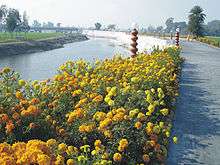
Kali Bein, a 99-mile-long (160 km) river, is considered sacred by the state's majority Sikh population. Over the past couple of decades, it was reduced to a filthy drain into which six towns and more than 40 villages emptied their waste. Parts of the river dried up, leaving neighboring farmlands parched. Its polluted waters also seeped underground, contaminating the groundwater and causing lethal diseases. Seechewal, a Sikh holy man, set out to clean up this mess. Drawing on the Sikh tradition of kar sewa (voluntary service), he and his followers taught locals why they should clean the Kali Bein, enlisting volunteers to do the physical work and raising funds for equipment. At the height of his movement, people from more than two dozen villages were pitching in. The scale of the task was gigantic — volunteers cleared the entire riverbed of water hyacinth and silt and built riverbanks and roads alongside the river. When appeals to government and municipal bodies failed to stop dirty water flowing into the river, Seechewal launched a public-awareness campaign to encourage villagers to dispose of their sewage elsewhere. Some villages revived traditional methods of waste disposal and treatment, and farmers lined up for a share of the treated water. A government order to divert water from a nearby canal was eventually obtained. As the riverbed was cleared, natural springs revived and the river began to fill up. Since then, trees have been planted along its banks and fishing has been banned to preserve bi-odiversity. Today, the Kali Bein is thriving. Families head there for picnics and the devout bathe during religious festivals. Seechewal has turned his sight to the tanneries and other factories that dispose of untreated waste in rivers. He is also leading efforts to get residents and the government to clean up rivers and creeks in a more systematic way across the state. "We have proved that it is possible to restore our rivers to a pristine condition if we all come together," says Seechewal. "It is time to do that on a bigger scale."
Gurbani Workshop for foreign Sikh converts
For almost a fortnight, soulful music from traditional string instruments, which have almost gone into oblivion, wafted from centuries-old Qila Sarai till Monday. Gurbani kirtan practitioners, mostly Sikh converts from foreign countries, practiced finer nuances in a unique workshop organized by Anad Foundation.
Shri Ram Kaur Khalsa, an Italian student of kirtan since 1996, said after embracing Sikhism, he got the opportunity to study Gurbani kirtan at the place where Guru Nanak Dev lived for several years. "It is like coming back home. All the people in the town have accepted us like a family. It has been amazing to receive their kindness and care," she said
The workshop was organized by Bhai Baldeep Singh, who had also taken up the issue of conservation of Qila Sarai and revive the heritage. The event brought people from India, Canada, the US, UK and Italy on a common platform.
References
- ↑ "Census of India 2001: Data from the 2001 Census, including cities, villages and towns (Provisional)". Census Commission of India. Archived from the original on 2004-06-16. Retrieved 2008-11-01.